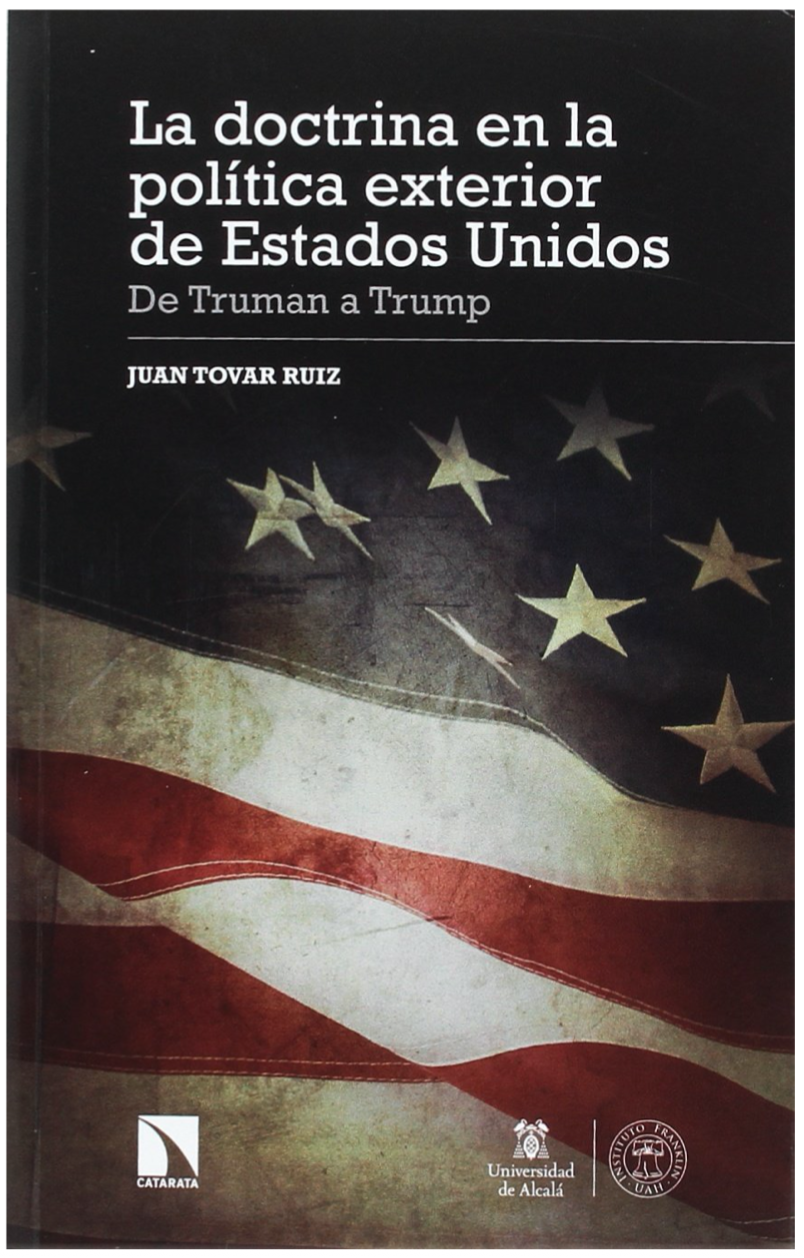[Juan Tovar Ruiz, La doctrina en la política exterior de Estados Unidos: De Truman a Trump ( Madrid: Catarata, 2017) 224 pages].
review / Xabier Ramos Garzón
Every change in the White House leads to an analysis of the outgoing president's policies and speculation about the incoming president's policies. Given the weight of the United States in the world, each administration's vision of international affairs is decisive for the world order. Juan Tovar Ruiz, professor of International Office at the University of Burgos, deals in this book with the essence of each president's foreign policy - mainly from Truman to Trump (Biden's, logically, has yet to be defined) - which in many cases follows a defined roadmap that has come to be called 'doctrine'.
The book's strengths include the fact that it combines several points of view: on the one hand, it covers, from a realist point of view, the structural and internal effects of each policy, and on the other hand, it analyses the ideas and interactions between actors from a constructivist point of view. The author explores decision-making processes and their consequences, considers the ultimate effectiveness of American doctrines in the general context of International Office, and examines the influences, ruptures and continuities between different doctrines over time. Despite the relatively short history of the United States, the country has had an extensive and complex foreign policy, which Tovar, focusing on the last eight decades, synthesises with particular merit, adopting a mainly general viewpoint that highlights the substantive.

The book is divided into seven chapters, organised by historical stages and, within each, by presidents. The first chapter, by way of introduction, covers the period following US independence until the end of World War II. This period is sample as a background core topic in future American ideology, with two particularly decisive positions: the Monroe Doctrine and Wilsonian Idealism. The second chapter deals with the First Cold War, with the Truman, Eisenhower, Kennedy and Johnson doctrines. The chapter contextualises the various postulates and identifies the issues that went to core topic in the creation of doctrines that only affected the foreign policy of the time, but became embedded in the core of American political thought. The third chapter deals with the Distension, the period between 1969 and 1979 in which the Nixon and Carter doctrines came into being. The fourth chapter takes us to the Second Cold War and the end of the US-USSR confrontation, a time when we find the doctrines of Reagan and Bush senior. From this point, the following chapters (fifth, sixth and seventh) deal with the post-Cold War period, with the doctrines of Clinton, Bush junior and the more recent - and therefore still subject to study - doctrines of Obama and Trump.
In the conclusions, the author summarises each of the chapters on the basis of academic or political characterisations and makes some qualifications, such as warning that in his opinion Obama's foreign policy is more of a "non-doctrine", as it combines elements of different ideologies and is partly contradictory. Obama dealt with various conflicts in different ways: he dealt realistically with "wars of necessity" (Afghanistan) and agreement with the liberal internationalist approach to conflicts such as Libya. While Obama's flexibility might be considered a weakness by some, as he did not follow a firm and marked policy, it can also be seen as the necessary adaptation to a continuously changing environment. On many occasions a US president, such as Bush Jr., has pursued a rigid foreign policy, ideologically speaking, that ultimately achieved little practical success written request .
Another example of a variant of the conventional doctrine that sample the author gives is the "anti-doctrine" carried out by Trump. The man who was to be president until 2021 implemented a policy characterised by numerous contradictions and variations on the role that the US had been playing in the world, thereby casting doubt and uncertainty on the expected behaviour of the American superpower. This was due to Trump's political inexperience, both domestically and domestically, which caused concern not only among international actors but also at the core of Washington itself.
From the analysis of the different doctrines presented in the book, we can see how each of them is adapted to a specific social, historical and political context, and at the same time they all respond to a shared political tradition of a country that, as a superpower, manifests certain constants when it comes to maintaining peace and guaranteeing security. But these constants should not be confused with universal aspects, as each country has its own particularities and interests: simply adapting US positions to the foreign policy plans of other countries can lead to chaotic failures if these differences are not recognised.
For example, countries like Spain, which depend on EU membership, would not be able to enter into random wars unilaterally as the US has done. However, Spain could adopt some elements, such as in subject of decision-making, as this subject of doctrines makes it much easier to objectify and standardise the processes of analysis and resolutions.